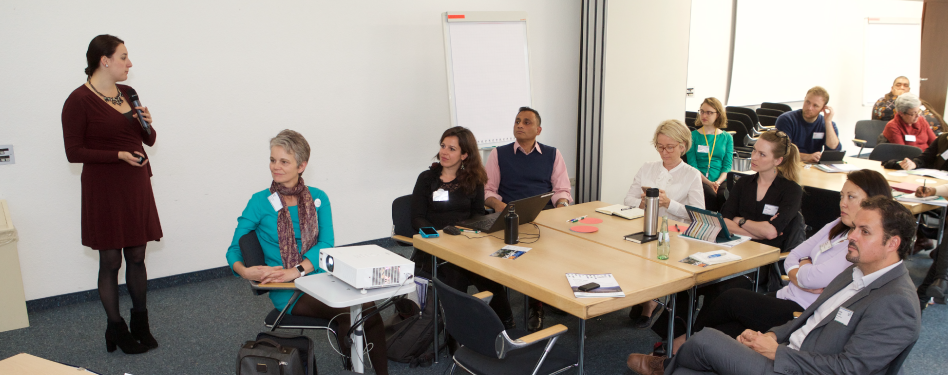
Droughts, floods, migration and informal settlements, water quality, climate preparedness, earthquakes...these were just a few of the resiliency challenges discussed by workshop participants at Resilient Cities 2017. Countries as diverse as Jamaica, Vietnam, Palestine, Nigeria, Jordan and the United States came together in Bonn, Germany from May 4–6 for the annual global forum on urban resilience and adaptation.
At the event, USGBC had the privilege to introduce this international group of city officials and advocacy organizations to LEED, SITES and PEER as tools to achieve resilience, and to show how policy levers can be applied to scale implementation of the resilience strategies.
LEED
The LEED rating system has a strong nexus with resilience. The climate sensitivity and adaptation opportunities presented by green building strategies were evaluated in a study by the University of Michigan in conjunction with USGBC. For example, in developing rainwater management systems, project teams can consider future climate conditions to ensure future performance. LEED can also help point to opportunities for climate mitigation through both reducing greenhouse gas emissions related to building construction and operation and increasing vegetation to take up carbon.
SITES
SITES applies proven green infrastructure approaches to achieve resilience in climate mitigation and adaptation. For example, using rainwater capture effectively with native vegetation can reduce or eliminate need for off-site water resources, and therefore reduce associated carbon emissions from pumping and treating water.
Drawing from research to focus on delivering ecosystem services, SITES incorporates the benefits provided by the natural ecological processes working all around us, such as supporting flood control, maintaining healthy systems during drought and serving as carbon sinks. By applying integrated design and using SITES as a guide, land, park, streetscape and landscape projects can not only achieve resiliency themselves, but can also contribute to resilience well beyond site borders.
PEER
The nation’s first comprehensive, outcome-driven system for evaluating power system performance, PEER helps electricity leaders, professionals and operators measure and improve performance. PEER provides a road map to increasing resilience as one of its core objectives.
For example, credits to boost energy reliability include strategies such as using advanced meters, communications and control systems; damage and exposure prevention; and distribution redundancy. By helping systems understand and value these improvement opportunities, PEER can set a path for a power system to support community resilience.
